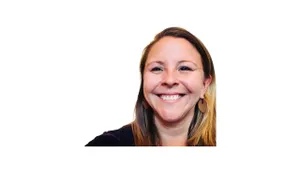Perfect Primary Source Combinations
How integrating digitized collections from across cultural institutions can create impactful learning experiences and more holistic narratives
:focal(2000x1333:2001x1334)/https://tf-cmsv2-smithsonianmag-media.s3.amazonaws.com/filer_public/cc/df/ccdfb7f1-4c0b-40b1-a0bd-596ba9a7a739/52034545235_07dc4580b1_o.jpg)
Individual primary sources can be excellent teaching tools—but when they are paired with others that reflect a variety of media, they can be magical! They can offer multiple perspectives on the same event, engage all of our senses and appeal to different learners' interests. What a photograph shows, an oral history might tell. What one source whispers, another might shout. What one source proves, another source might contradict. And the more we share multiple sources with students—or encourage students to find them on their own—the more we model how knowledge can become wisdom.
Searching for, combining, and creating with a robust variety of sources can be both challenging and exhilarating because often, the materials are not all found in a single repository. For example, an inventor’s papers may be in the collections of the Library of Congress, while their patent applications are in the holdings of the National Archives, their patent models are in the Smithsonian, their workshop is maintained by the National Park Service, and a local historical society provides tours of the inventor’s home.
Fortunately, digitization efforts have led to online collections and exhibitions, dramatically increasing the access and usability of materials housed in multiple repositories. This unprecented access to high quality instructional sources, paired with inquiry prompts and critical thinking questions, can enhance and deepen teaching on a wide range of topics.
Organizations across the country have also been combining such collections in their work with educators and experiencing transformative results. For example, according to Bridget Morton, Assistant Professor of Education at Mars Hill University in Western North Carolina, participants in their Appalachian Diversity program for educators explore music as an entry point to recognize the number of cultures that have come together to represent Appalachia. She explains, “We use resources from the Bascom Lamar Lunsford Collection in our University archives, lesson plans from the Smithsonian Folkways collection, and interviews from the Library of Congress American Folklife Center with Appalachian storytellers and singers.”
/https://tf-cmsv2-smithsonianmag-media.s3.amazonaws.com/filer_public/fc/ba/fcba0c7e-d465-4081-9b75-f2e7d0cee31f/distance-learn.jpg)
Kathleen Barker and her colleagues at History UnErased developed a case study on the Harlem Renaissance using images from the Smithsonian American Art Museum, as well as songs, poems, and newspapers from the Library of Congress, maps from the Census Bureau, and archival material from the Schomburg Center to give students and teachers a more complete picture of the past. She emphasized, “People whom we label and understand today as LGBTQ have always existed. The collections of institutions like the Library of Congress and the Smithsonian play an important role in History UnErased’s mission of bringing LGBTQ-inclusive history to K-12 classrooms.”
In Massachusetts, Rich Cairn and Alison Noyes at the Collaborative for Educational Services, Emerging America program developed a course for educators entitled, “Reform to Equal Rights K-12 Disability History.” Its curriculum features primary sources from the Smithsonian National Museum of American History’s online exhibition on Disability History , and relies heavily upon the diverse collections of the Library of Congress. In particular, many lessons highlight the rich source set entitled “Free to Use and Reuse: Disability Awareness.”
Each of these examples briefly describes a project that has received grant funding from the Center for Learning Literacy and Engagement at the Library of Congress through the Teaching with Primary Sources (TPS) program. TPS grants support the Library’s mission to engage, inspire, and inform Congress and the American people with a universal and enduring source of knowledge and creativity.
Editor's Note: To learn more about the Library of Congress’ Teaching with Primary Sources program, additional examples of combining Library of Congress resources with Smithsonian and local resources, and grant opportunities to support this work, join Lee Ann Potter and a panel of educators from across the country at the Smithsonian's National Education Summit on July 27-28, 2022. More information is available here: https://s.si.edu/EducationSummit2022

